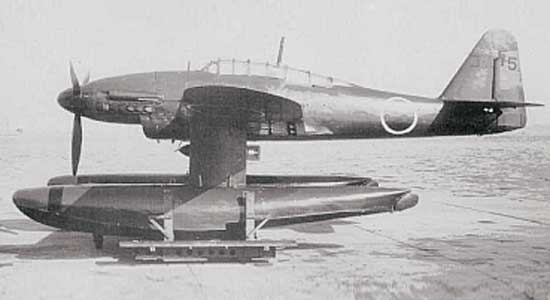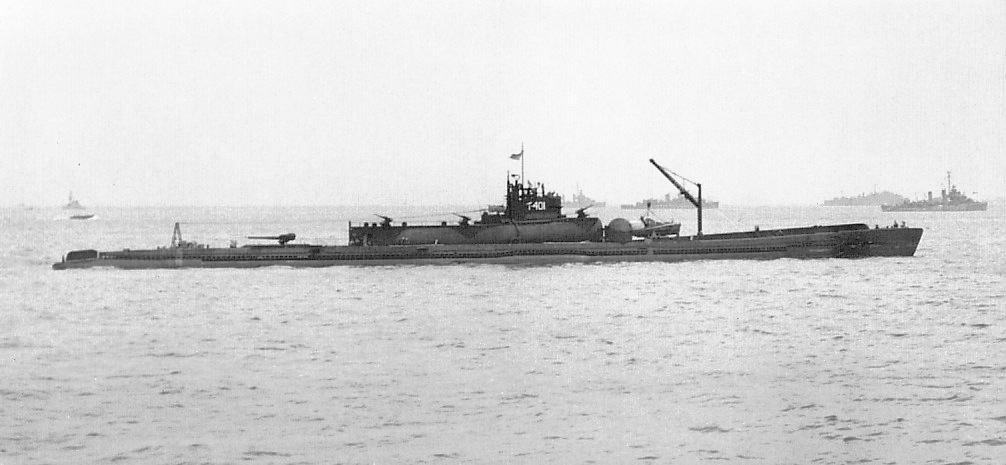Dietrich's claims from "IMPERIAL JAPANESE AIRCRAFT – THE TRUTH BEHIND ROSWELL AND BATTLE OF LA UFO’s”
Under the subheading "Imperial Japanese Navy Bombers", Dietrich makes specific references to the Mitsubishi Ki-67 ("Peggy") and Tachikawa Ki-74 ("Patsy") and Tachikawa Ki-77.
https://en.wikipedia.org/wiki/Mitsubishi_Ki-67
https://en.wikipedia.org/wiki/Tachikawa_Ki-74
https://en.wikipedia.org/wiki/Tachikawa_Ki-77
In each case, Dierich falsely inflates the maximum effective ranges and other capabilities of these aircraft.
Mitsubishi Ki-67:
“Peggy” appeared in several configurations, one being redesignated as the Ki-109, serving as a high-altitude B-29 Destroyer (by carrying a 75 mm cannon in its nose with enough punch and range to stay out of the defensive fire-radius of the targeted B-29 while disintegrating it in mid-air). The Emperor refused to deploy these models against the Enola Gay or Bock’s Car in order to avoid the consequent nuclear airburst(s) and resultant EM-Pulse(s) at such altitude(s) – which would have fried Japan’s grid on a national level."
"When the Americans Sued for Peace and parceled forces to Japan to assist in reconstruction, a demonstration model “Peggy” – the “#069” (Emperor Hirohito’s “flying Feuhrerbunker,” inspired by F.D. Roosevelt’s “Air Force One”) – was presented to American Technical Intelligence at Irumagawa Airbase, located near Yokota Airbase, Tokyo."
"The “Peggy’s” two thousand, three hundred (2300) mile range, seemingly indicative of in-theatre utility, would now prove decisive on the American Front – the vast majority of “Soft Targets” in the United States laying wide open on the coasts! For over half a decade (1945—1951), the Sen-Toku(s) prowled off the Atlantic and Caribbean Seaboards of the United States, enforcing American commitment to Talk-Down."
Actual Range: 1,700 miles
Dietrich claims these aircraft were deployed from Japanese submarines on the Atlantic and Caribbean (seaboards?) coasts of the United States until 1951 using I-400 class "Sentoku"
https://en.wikipedia.org/wiki/I-400-class_submarine.
The I-400 was designed to carry 3 Aichi M6A1 Seiran sea-planes. https://en.wikipedia.org/wiki/Aichi_M6A
Following Yamamoto's death in April 1943, the number of aircraft-carrying submarines to be built was reduced from eighteen to nine, then five, and finally three. Only I-400 and I-401 actually entered service; I-402 was completed on 24 July 1945, five weeks before the end of the war, but never made it to sea.
The wreckage of I-401 was discovered by the Pisces deep-sea submarines of the Hawaii Undersea Research Laboratory in March 2005 at a depth of 820 meters (2,690 ft). It was reported that I-400 was later found by the same team off the southwest coast of the Hawaiian island of Oahu in August 2013 at a depth of 700 meters (2,300 ft). NOAA researcher Jim Delgado, working aboard Pisces V, told the Chicago Tribune "It was torpedoed, partially collapsed and had sunk at a steep angle." The submarines scuttled off the Japanese coast were relocated in July 2015.
But of course, Dietrich's most outrageous of claims regarding the Ki-67 is that they were capable of deploying "atomic" bombs.
"Another version of the “Peggy” was that of a Kamikaze aircraft with a large explosive charge built inside to detonate on impact. This was the “Atomic Peggy” – as instrumental in forcing the Americans to concession as any of the other integral facets of Japan’s Holocaustic Arsenal we have discussed. The “Peggy” was a standardized design. the empty weight of the standardized “Peggy” was nineteen thousand (19, 000) pounds.
The maximum take-off weight was thirty thousand (30, 000) pounds. Therefore standard carrying capacity was eleven thousand (11, 000) pounds of weight! The Axis Powers utilized uranium bombs. The “Little Boy” bomb dropped on Hiroshima was – as Oppenheimer stated – “of German provenance” (obliquely referring to the “Project Paperclip” Nat-Zi Physicists emigrated to America on Cease-Fire in Europe to complete what the Americans could not) and simply the knock-off of fairly standardized German atomic ordnance (the “Fat Man” plutonium bomb was a more unique example of ad hoc American idiosyncrasy).
It (the “Little Boy”) was surprisingly lightweight for a shell with the explosive power of thirteen thousand (13, 000) tons of TNT – a mere eight thousand, eight hundred and ninety-nine (8899) pounds! Hence the three (3) “Peggys” launched from each I-400 Sen-Toku submarine aircraft carrier would be fully crewed and equipped with enough defensive armament to power through any attempted American interception inland."
"For years, the four hundred (400) foot steel I-400 leviathans dodged destroyer after destroyer by stealing from one charted wreck to the next, Emperor Hirohito threatening launch whenever the United States military threatened nuclear/saturation depth-charging of the wreck-scape – a wreckscape of sunken tonnage seemingly created expressly for the Sen-Toku by the prior German campaign against Allied merchant shipping. Any who doubt the enormity of sunken merchantmen advertise their ignorance of the fact that commercial vessels far larger than the “Titanic” lay at the bottom of the North American Great Lakes, victims of squall and sabotage on America’s Home Front."https://douglasdietrich.com/2020/06/07/roswellian-realities-from-out-of-the-rising-sun-through-the-battle-of-los-angeles/
This claim is total bullshit. The I-400 subs could not carry 3 KI-46 medium bombers, nor were they armed with nuclear bombs. Dietrich describes them as operating after WW2 until 1951 and each capable of carrying a full crew and armament. Such a claim is just ridiculous nonsense.
Are we to believe that such "submarine aircraft carriers" simply went undetected by hiding themselves near wreckage on the floor of the Atlantic at a depth of thousands of feet?
"The U.S. Navy boarded and recovered 24 submarines, including the three I-400 submarines, taking them to Sasebo Bay to study them. While there, they received a message that the Soviets were sending an inspection team to examine the submarines. To prevent this Operation Road's End was instituted. Most of the submarines were taken to a position designated as Point Deep Six, about 35 km (19 nmi) southeast of Fukue Island,[37] packed with charges of C-3 explosive and destroyed; they sank to a depth of 200 m (660 ft).
Four remaining submarines, I-400, I-401, I-201 and I-203, were sailed to Hawaii by U.S. Navy technicians for further inspection. Upon completion of the inspections, the submarines were scuttled in the waters off Kalaeloa near Oahu in Hawaii by torpedoes from US submarine USS Trumpetfish on June 4, 1946, to prevent the technology from being made available to the Soviets who were demanding access to them. Dr. James P. (Jim) Delgado of the National Oceanic and Atmospheric Administration's maritime heritage program reported that the official government position that the exact location of the sinking was unknown has been confirmed by declassified US Navy documents."
But this is the type of bullshit this article by Dietrich presents and will likely be replicated in a book with Peter Moon.
The other two aircraft Dietrich mentions are the Tachikawa Ki-74 and Tachikawa Ki-77. Both were considered "experimental" and never manufactured in large quantity as Dietrich describes, and never deployed in combat.
"The Ki-74 planes were twin-engined aircraft designed to fly nonstop from Tokyo to New York. With a calculated range of eleven thousand, one hundred and eighty-five (11, 185) miles at one hundred and eighty-six (186) mph (miles per hour); these craft were directly derived from two (2) prototypes built BEFORE Pearl Harbor – the Tachikawa Army Long Range Research Aircraft (Ki-77s), originally designed to undertake goodwill non-stop flight from Tokyo to New York in 1940 (civilian-designated as the Asahi A-26s) for recognition of the 2600th year of the Japanese national calendar. Instead, one disappeared over the Indian Ocean on a projected nonstop flight from Singapore toBerlin."
https://douglasdietrich.com/2020/06/07/roswellian-realities-from-out-of-the-rising-sun-through-the-battle-of-los-angeles/
ACTUAL RANGE: 5,000 miles
Dietrich claims a KI-74 'disappeared over the Indian Ocean" This is false and can be related to his next claim regarding the Tachikawa Ki-77.
"The Command Ki-77 demonstrated on show flight over a triangular circuit in Manchuria in the Summer of 1944 the coverage of a distance of ten thousand, two hundred and twelve (10, 212) miles, remaining aloft for fifty-seven hours and twelve minutes (57 hrs.; 12 mns.). To help achieve the successor-generation Ki-74’s mission of reaching select targets in the United States, the “Patsy(s)” each boasted a pressurized cabin for all five crew members in the forward compartment.
These bombers were being churned out in the lead-lined super-industrial bunkers beneath the city of Nagasaki by over two thousand and five hundred (2500 +) mass-production personnel, and such assembly continued without a hitch, even as the plutonium-powered equivalent of twenty thousand tons of TNT leveled the city above them – a fact to which the bunkered Mitsubishi employees were totally oblivious! Thusly did the “Fat Man” prove its performance potential to be pointless, strategically delivering zero impact against the Japanese war effort even as the Task Force of the Sacred Crane landed in Nevada to deliver the Showa Ultimatum and force the immediate and rapid demobilization of the American War Machine"
https://douglasdietrich.com/2020/06/07/roswellian-realities-from-out-of-the-rising-sun-through-the-battle-of-los-angeles/
_cariied_on_USS_Bogue.jpg) |
| Captured Ki-77 aboard USS Bogue |
 |
| Tachikawa Ki-77 in U.S. markings, 1945
Colonel Saigo considered the so-named "Seiko" (Success) mission absurd and suicidal, but the crew was aware of the hazards of the mission; they even had a personal dose of poison to kill themselves if forced down in enemy territory. The pilot was Juukou Nagatomo, the co-pilot was Hajime Kawasaki, Kenji Tsukagoshi and Noriyoshi Nagata were flight engineers, and Motohiko Kawashima was the radio operator. Three Army officers were also carried as passengers, two of whom were military attachés. They departed Japan on 30 June 1943 for Singapore, where the airstrip had to be lengthened by 1,000 meters to assure a safe takeoff. Finally, the aircraft took off at 7:10 on 7 July 1943 with eight tons of fuel, ample to reach Europe.
Their intended destination was the German airfield at Sarabus (now Hvardiiske, Crimea, 45.118236°N 33.976564°E.) but they were to disappear over the Indian Ocean. British fighters likely intercepted them as they were aware of the flight and its route (via air grid squares 3420, 2560 and 2510) thanks to the ULTRA analysts at Bletchley Park decoding intercepted German communications to Sarabus warning of their impending arrival. Slow, unarmed, without armor protection and with a substantial amount of fuel onboard, the Ki-77 would have been vulnerable to Allied fighters, even had no mechanical problems occurred. https://en.wikipedia.org/wiki/Tachikawa_Ki-77

Japan carried out a second flight to gain an endurance record and to verify the Ki-77's capabilities. The existing record had been held by Italy's Savoia-Marchetti SM.75GA since 1939.
Even if the usefulness of record-breaking flights was overshadowed in 1944 by the necessities of war, the Japanese needed a propaganda coup and the surviving Ki-77 was available. On 2 July it flew 19 circuits over a triangular route off Manchuria, landing 57 hours 9 minutes later and covering 16,435 km (10,212 mi) at an average speed of 288.2 km/h (179.1 mph), 3,499 km (2,174 mi) more than the SM.75's 12,936 km (8,038 mi) record.
The Ki-77 landed with 800 liters remaining in the tanks of the 12,200 l (2,700 imp gal; 3,200 US gal) it began with, so the maximum endurance was around 18,000 km (11,000 mi). The Ki-77's endurance record was first exceeded in October 1946 by a Lockheed P2V-1 Neptune in a flight from Perth, Australia to Columbus, Ohio in the American midwest, of over 18,083.6 km (11,236.6 mi). None of these records were internationally recognized or officiated by the FAI.
The distance record Ki-77 aircraft was still in existence when Japan surrendered and was shipped to the United States aboard the United States Navy escort carrier USS Bogue from Yokosuka in December 1945, arriving at Alameda, California on 8 January 1946 for examination before being scrapped. https://en.wikipedia.org/wiki/Tachikawa_Ki-77
|




No comments:
Post a Comment